Lajos Kossuth is an unavoidable figure in Hungarian history. During the Dualism, the relationship to his person was quite peculiar, since the legal king of the country was Franz Joseph, whose troops invaded the country in 1849 as conquerors, and whose legal head of state was Lajos Kossuth. After that, Franz Joseph actually ruled unlawfully until 1867.
When Lajos Kossuth died in 1894, state officials and members of the army had to stay away from the funeral, for example. There was no question of erecting a statue of Kossuth with state money either, but after the funeral of the "hermit of Turin", the collection for a monument to perpetuate his memory in the capital began almost immediately. Pestbuda presented in detail why this process took 33 years, and what controversies the placement of the statue gave rise to.
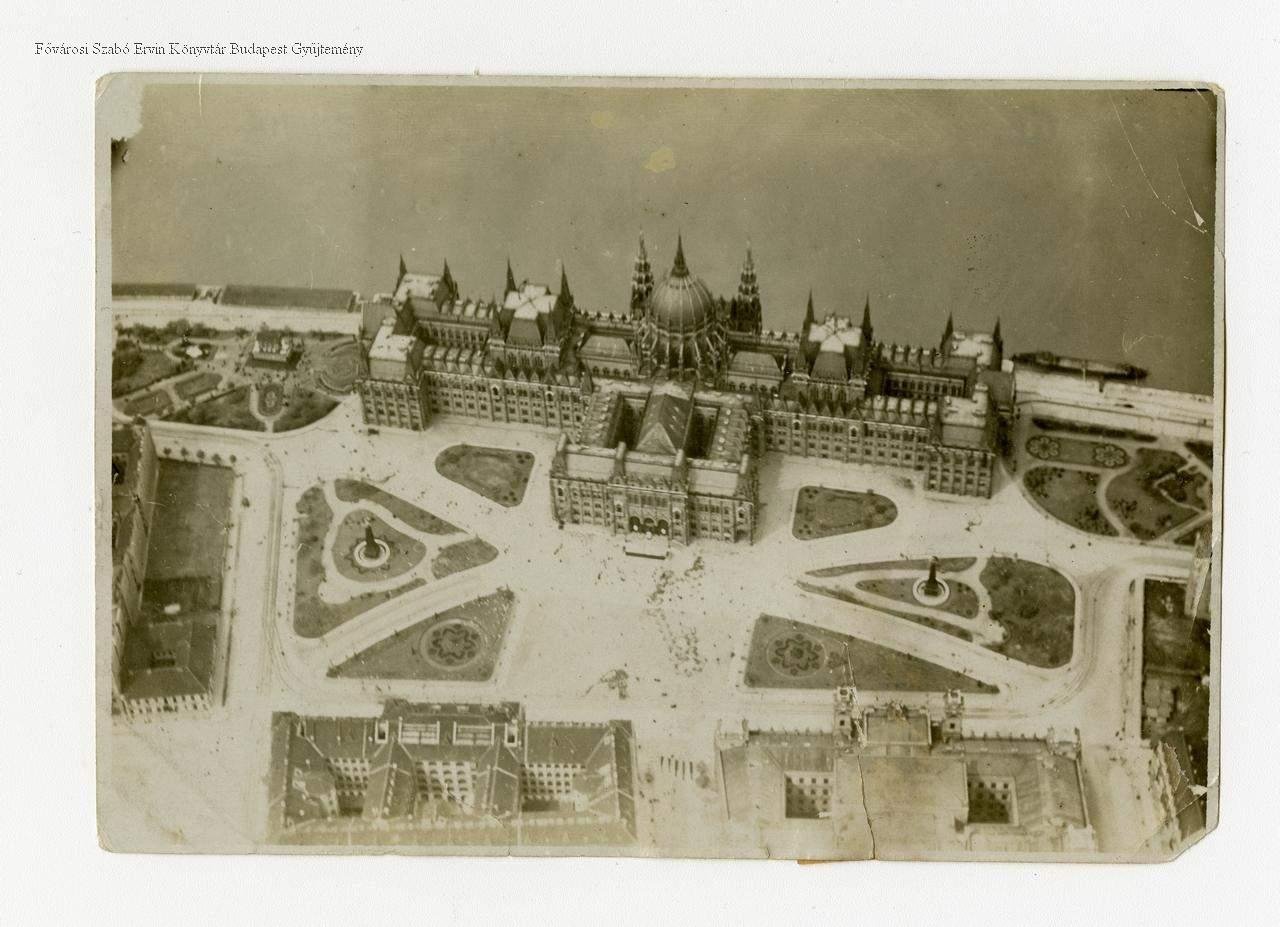
Országház Square without the statue of Lajos Kossuth in the 1920s (Photo: FSZEK Budapest Collection)
As a result of the long process, the work of János Horvay, which had been in the works for decades, was unveiled on 6 November 1927, in the square in front of the Parliament which was named after Lajos Kossuth then, in 1927, but the statue itself and the ceremony caused a lot of controversies. A problem arose already during the preparations, as too many people wanted to speak at the inauguration. The following was written in the 6 November 1927 issue of Kis Ujság:
"The 100,000 people who participated should have had to listen not only to Apponyi (and) the official speeches and not only the speeches accompanying the 2,000 wreath-layings, but hundreds more came from all over the country who wanted to speak at the statue. It soon became clear that if everyone could speak during the unveiling, the celebration would last for four weeks day and night. And few participants could endure that. For this reason, it had to be decided that there would be only three speeches and that the wreaths should be placed on the statue without a speech. Even so, the inauguration will predictably last until dark evening, a sign that Kossuth's figure lives on in the minds of Hungarians better than ever."
At the inauguration of the statue, in addition to the guests of honour, almost all the diplomatic missions delegated to Budapest were represented, with the exception of the Czechoslovak, Yugoslav, and Romanian embassies, because no one from their side appeared at the ceremony. Sixty thousand people filled the square. The main speaker was Albert Apponyi, after whose speech Governor Miklós Horthy laid a wreath.
Then an extremely interesting event followed. After the governor, the Habsburg Archdukes, Joseph, Joseph Francis and Albrecht, laid their wreaths, and Archduke Joseph even gave a speech at the inauguration of the statue of the sworn opponent of the House of Habsburg.
Wreaths were laid by the government, the Parliament, and then the ambassador of the United States, who also said a few words in Hungarian. He was followed by the delegation of the Italian government and the city of Turin, and further on, in an almost endless line, church representatives - except for the Catholic Church -, city delegations and representatives of foreign governments laid their wreaths, while the planes of the Hungarian Aero Association made circles of honour over the square. That evening, all theatres and cinemas scheduled a play or film related to Kossuth, and of course, there were also receptions and other commemorative gatherings.
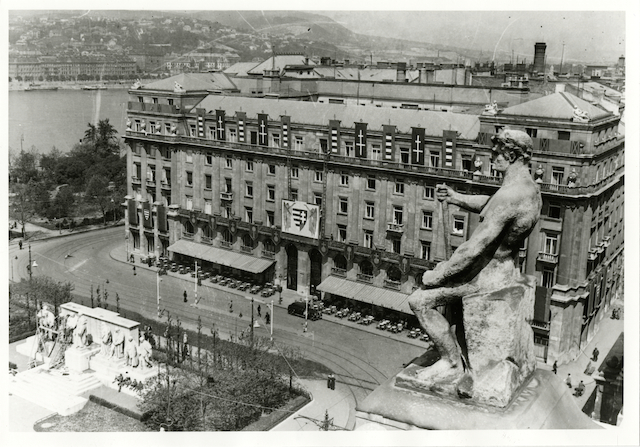
The statue before its inauguration in 1927 (Photo: Hungarian National Museum, Inventory number: 266/1961 fk)
However, after the inauguration of the statue of Lajos Kossuth, several scandals broke out. The opposition conspicuously stayed away from the ceremony, which of course led to a long political debate, but there were other problems as well. The fact that the Catholic Church did not lay a wreath at the monument, while the other denominations did, gave rise to mixed feelings, and this was a topic not only in the press but also in the Parliament. The official reason was that the organisers forgot to send an invitation to the College of Bishops (which would have been rather strange), to which several representatives pointed out that the bishops, as main orders, were invited in the first place.
However, in addition to the fiascos surrounding the inauguration, there was an even bigger problem, namely that virtually no one liked the monument. Minister of Welfare József Vass also spoke to journalists about this in the parliament. According to the 8 November 1927 edition of Esti Kurir, he said:
"Everyone says that the erected statue of Kossuth is not the Kossuth of the Hungarians, that Kossuth and the supporting characters are all unfortunate sick people - this is what they say in every party, this is the general opinion. Minister Vass replied: - Yes, as if they were all marching with their heads hanging down. One can really think that the whole thing is a funeral procession of the Hungarian freedom."
It was even suggested that the figure of Kossuth in the group of statues should be replaced, and later another idea came that a second, "better" statue of Kossuth should be inaugurated elsewhere in the capital.
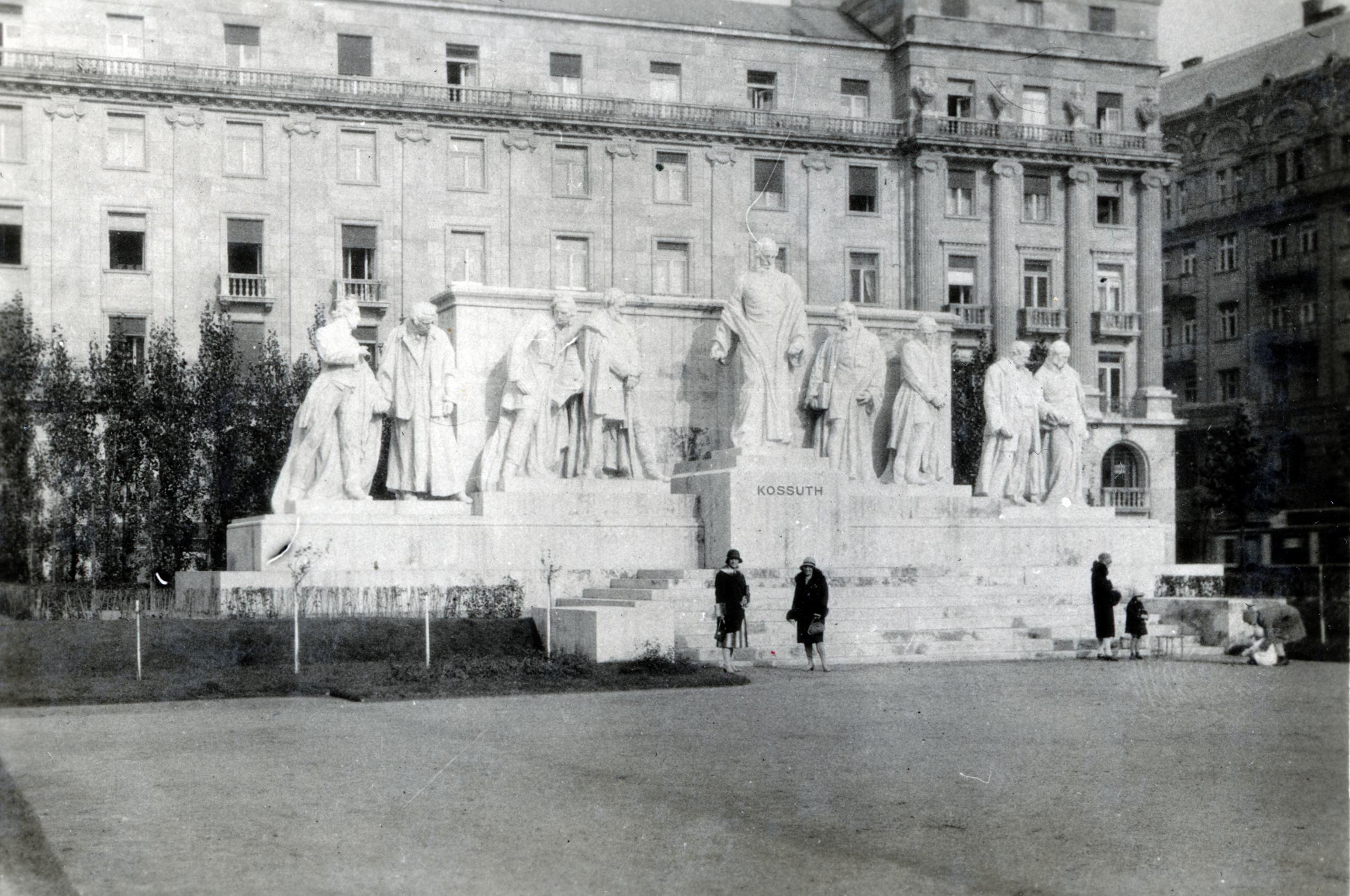
The group of statues erected on Kossuth Square (Photo: Fortepan/Reference No.: 165499)
However, the debate died down within a few years, the statue was apparently accepted by everyone, and when it was damaged in World War II, it was repaired by 1949.
But then came the new power, which did not accept that the statue of Lajos Kossuth was not "revolutionary", i.e., did not correspond to the prevailing ideology of the "new world", and therefore for the 150th anniversary of the birth of Lajos Kossuth, a new statue was ordered from Zsigmond Kisfaludi Strobl, and they replaced the old with their new version. Fortunately, the old one was not destroyed, but the figures of the group of statues were erected in Dombóvár. However, during the renovation of Kossuth Square in 2015, the old group of statues was restored - but not the Dombóvár statues, they made a re-carved one.
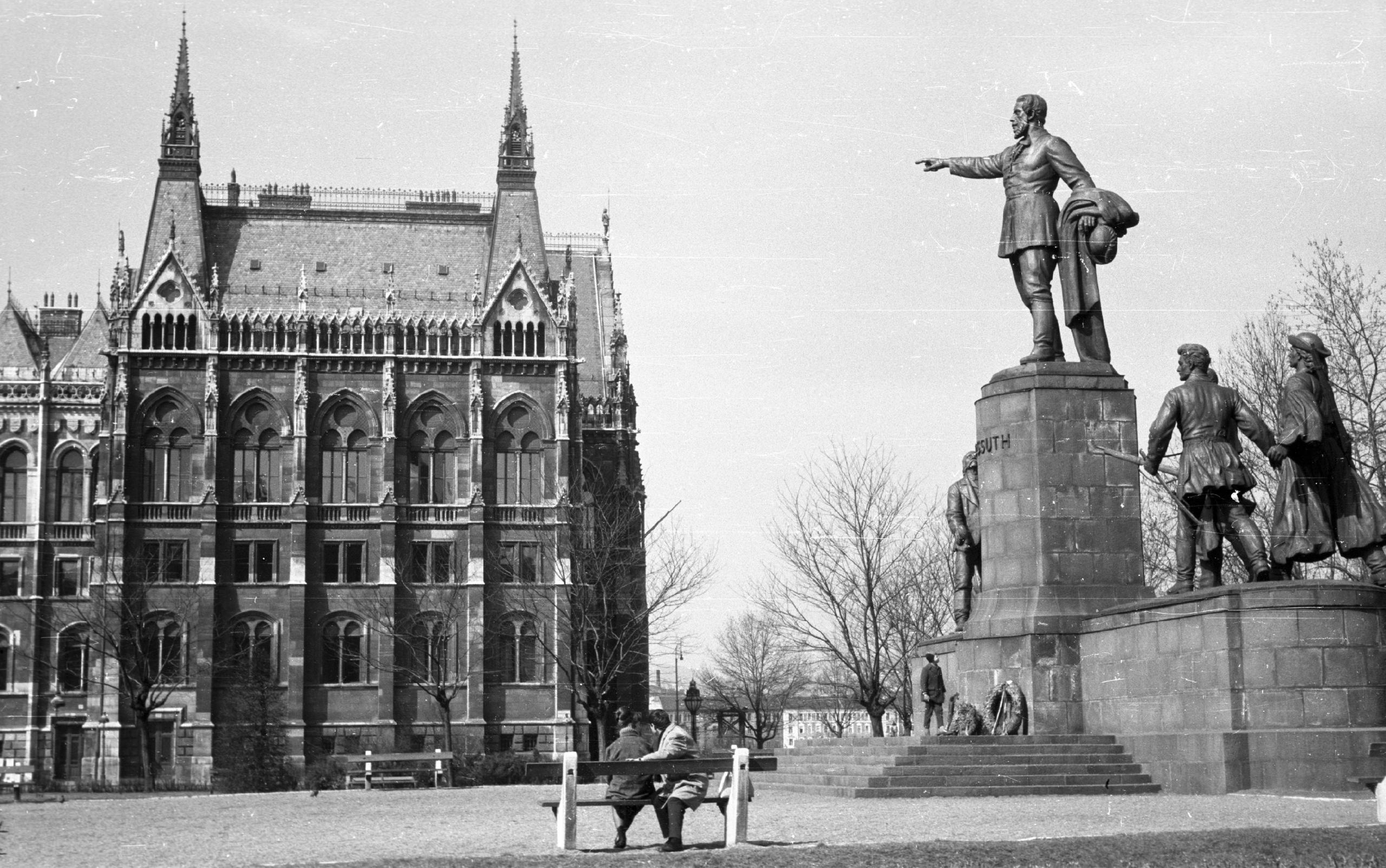
The work of Zsigmond Kisfaludi Strobl, which was on display from 1952 (Photo: Fortepan/Reference No.: 31613)
Today, the old, original monument – or its recreated version – can be seen again on Kossuth Square, depicting Lajos Kossuth and the members of the Batthyány Government. Indeed, these nine people are not in a revolutionary pose, but they were not "revolutionaries", but members of a government that had to govern the country in an impossible situation, and they did it to the best of their ability.
Cover photo: The Kossuth group of statues has been re-carved and is back in its original place since 2015 (Photo: Balázs Both/pestbuda.hu)
MORE ARTICLES ON THE SUBJECT:

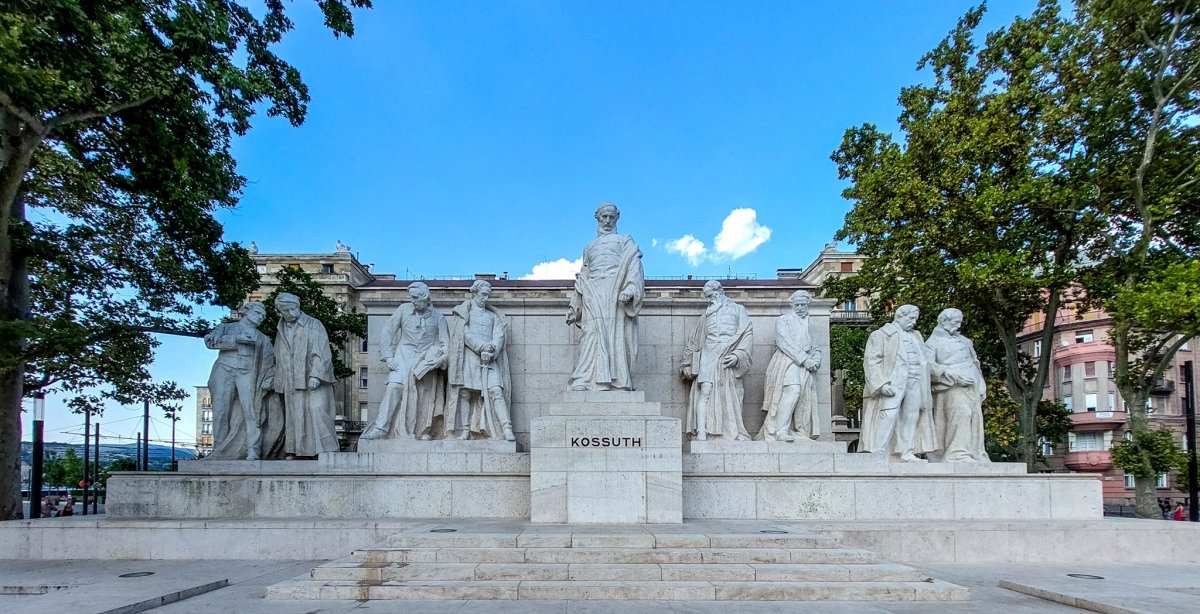


































Hozzászólások
Log in or register to comment!
Login Registration